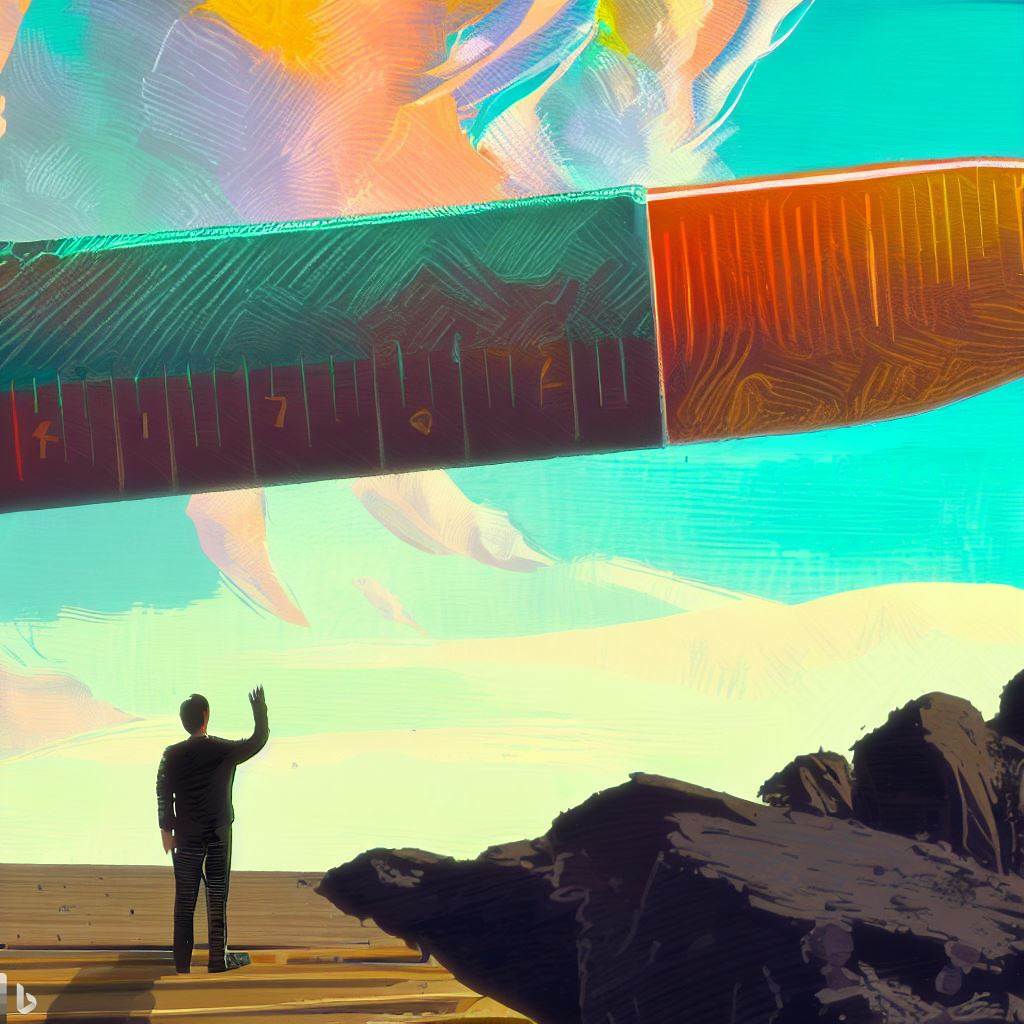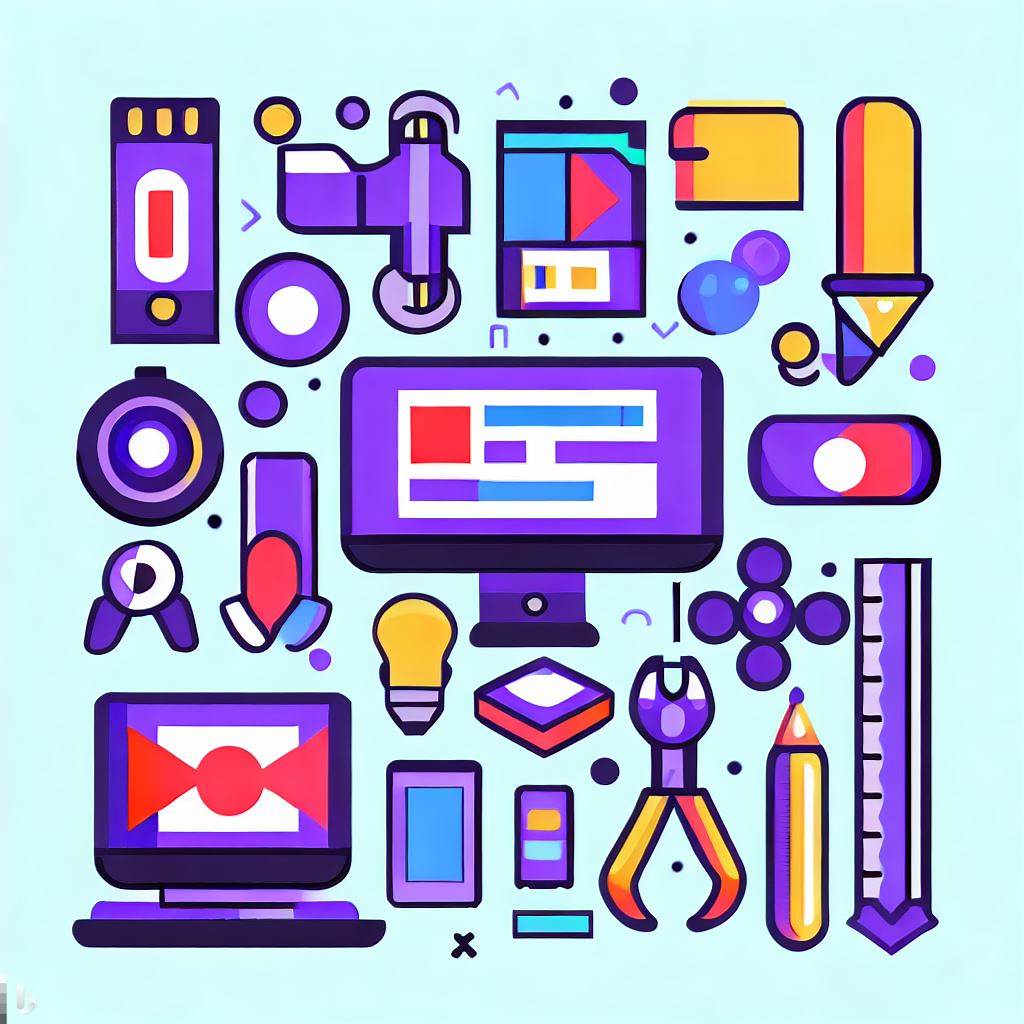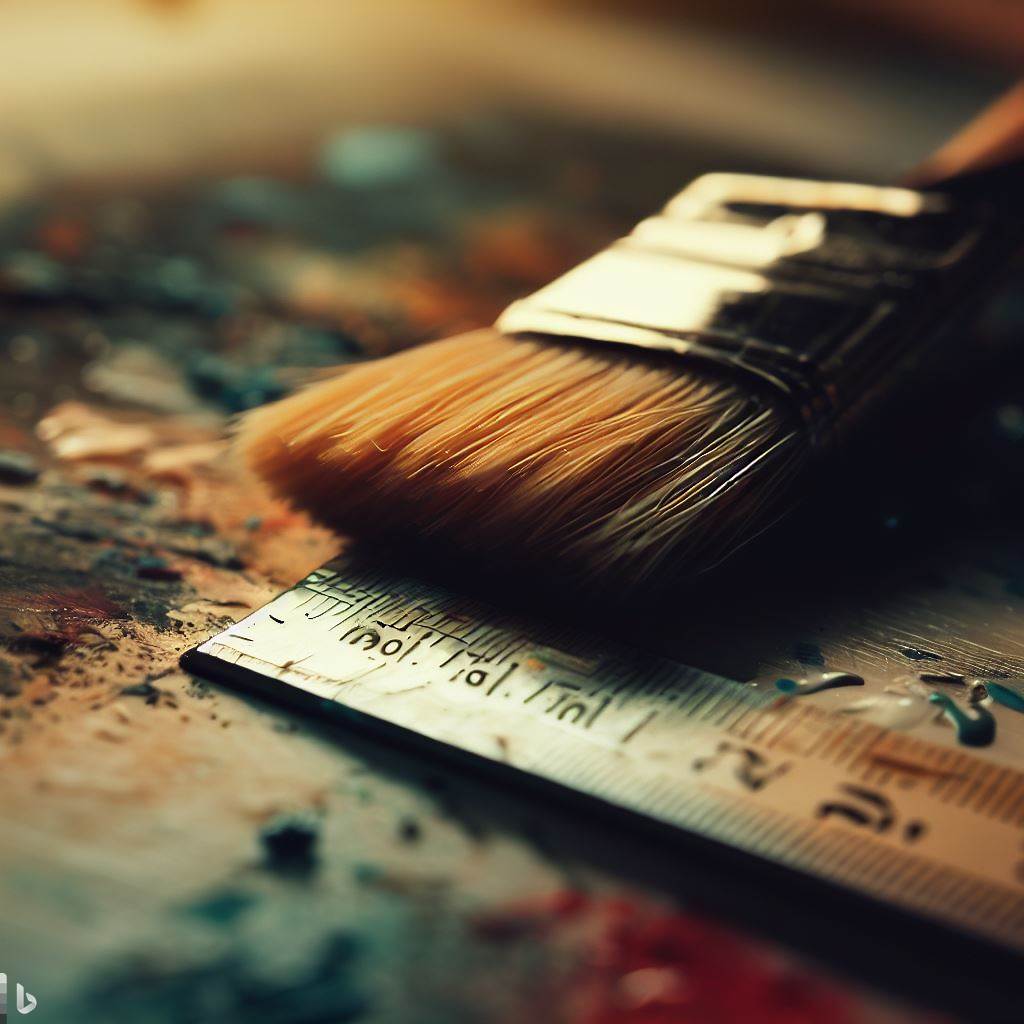Are you confused about the difference between graphic design and web design? Do you find yourself wondering which field is the right fit for your creative aspirations? Look no further! In this comprehensive article, we will delve deep into the realms of graphic design and web design, exploring their nuances, similarities, and unique characteristics. By the end, you will have a clear understanding of the difference between graphic and web design and be able to make an informed decision about your career path. So, let’s dive right in and explore the exciting world of graphic design vs web design!
Vital components of the modern creative landscape.
Both graphic design and web design are vital components of the modern creative landscape. While they share some similarities, each discipline has its own unique focus and skill set. Graphic design primarily deals with visual communication, creating aesthetically pleasing designs for various mediums, such as print, advertisements, and branding. On the other hand, web design involves crafting interactive and user-friendly experiences on the internet, ensuring seamless navigation and optimal functionality. Now, let’s delve deeper into each field to grasp their essence.
Graphic Design – Unleashing Creativity
Graphic design is an art form that enables the creative expression of ideas, concepts, and messages through visual compositions. It encompasses a wide range of design elements, including typography, color theory, layout, and imagery. Graphic designers leverage their artistic skills and technical expertise to create captivating designs that effectively convey a specific message or evoke desired emotions.
The Power of Visual Storytelling
In the realm of graphic design, one of its primary purposes is to tell stories visually. By skillfully combining imagery, typography, and layout, graphic designers can create compelling narratives that resonate with their target audience. Visual storytelling has the remarkable ability to captivate viewers, elicit emotions, and leave a lasting impression.
Versatility and Adaptability
Graphic design is a versatile field that finds applications in various industries and mediums. Whether it’s designing logos, packaging, posters, or even creating digital illustrations, graphic designers have the flexibility to adapt their skills to meet the unique requirements of different projects. This adaptability allows them to work in diverse settings, from advertising agencies to publishing houses, and even as freelance designers.
Essential Tools of the Graphic Design Trade
To bring their creative visions to life, graphic designers rely on a variety of industry-standard tools and software. Some of the most commonly used software in graphic design include:
- Adobe Photoshop: A powerful image editing software that allows designers to manipulate and enhance images, create digital illustrations, and design graphics with precision.
- Adobe Illustrator: A vector-based design program that enables designers to create scalable and high-quality illustrations, logos, icons, and typography.
- Adobe InDesign: A layout and publishing software used for designing print materials such as brochures, magazines, and books. It provides precise control over typography, layout, and formatting.
- Canva: A user-friendly online design tool that caters to beginners and professionals alike. Canva offers a wide range of templates, graphics, and customization options for creating stunning designs.
- Sketch: A popular design tool primarily used by UI/UX designers for creating digital interfaces, wireframes, and prototypes. It focuses on collaborative design workflows and is widely favored in the web and app design industry.
- Procreate: An iPad-based digital art studio that provides a vast array of brushes and tools for creating digital illustrations and paintings. It has gained significant popularity among digital artists and illustrators.
While these tools are commonly used in graphic design, it’s important to note that the field is constantly evolving, and new tools and technologies continue to emerge. Graphic designers must stay up-to-date with industry trends and embrace new software to enhance their creative capabilities.
Web Design – Bridging Creativity and Functionality
Web design, unlike graphic design, focuses on creating visually appealing and functional websites that provide optimal user experiences. Web designers combine their artistic skills with technical knowledge to design layouts, user interfaces, and interactions that engage users and facilitate seamless navigation.
User-Centric Design
Web design revolves around the concept of user-centric design, which prioritizes the needs and preferences of the website’s target audience. Web designers strive to create intuitive and user-friendly interfaces that ensure visitors can easily find the information they need and navigate the site effortlessly.
Responsive Design for All Devices
In today’s digital landscape, where users access websites on various devices such as smartphones, tablets, and desktop computers, responsive design has become a fundamental aspect of web design. Responsive design ensures that websites adapt and display correctly on different screen sizes, providing a consistent and enjoyable user experience across devices.
Collaboration with Web Developers
Web designers often collaborate closely with web developers to bring their designs to life. While web designers focus on the visual and interactive aspects of a website, web developers handle the coding and technical implementation. This collaboration ensures that the design is faithfully translated into a functional website that meets the client’s requirements.
Tools and Technologies
Web designers utilize a combination of design tools and programming languages to create visually stunning and functional websites. Some commonly used tools and technologies in web design include:
- Adobe XD: A popular design and prototyping tool specifically tailored for creating website and app designs. It allows designers to create interactive prototypes, define user flows, and collaborate with other team members.
- Sketch: As mentioned earlier, Sketch is also widely used in web design due to its focus on UI/UX design and collaborative features.
- HTML (Hypertext Markup Language): The fundamental language used for structuring and presenting content on the web.
- CSS (Cascading Style Sheets): CSS is responsible for styling and formatting web pages, controlling elements’ appearance, layout, and visual effects.
- JavaScript: A programming language used to create interactive elements and dynamic functionality on websites.
- Content Management Systems (CMS): CMS platforms like WordPress, Drupal, and Joomla provide a user-friendly interface for managing website content and updating it without the need for coding knowledge.
- Responsive Frameworks: Frameworks like Bootstrap and Foundation offer pre-built responsive design components and layouts, making it easier for web designers to create websites that adapt to different devices.
- Prototyping Tools: Tools such as InVision and Figma allow web designers to create interactive prototypes and conduct usability testing before the development phase.
The Role of Graphic Design in Web Design
There are differences between graphic design and web design. You might think both are equal disciplines the former governs the other; while web design focuses on the functionality and usability of a website, graphic design enhances the visual appeal and creates a cohesive brand identity. Here are some key ways graphic design influences web design:
- Visual Branding: Graphic designers create logos, color palettes, and typography that represent the brand’s identity. Web designers incorporate these visual elements into the website design, ensuring consistency across all touchpoints.
- Layout and Composition: Graphic design principles such as grid systems, visual hierarchy, and balance guide web designers in structuring the layout of web pages. This ensures a visually pleasing and organized presentation of content.
- Imagery and Illustrations: Graphic designers create high-quality images, illustrations, and icons that enhance the visual appeal of a website. Web designers strategically place these visual elements to convey messages, evoke emotions, and improve user engagement.
- Typography: Graphic designers choose fonts that align with the brand’s personality and ensure readability. Web designers implement these fonts across the website, paying attention to hierarchy, spacing, and legibility.
- User Interface (UI) Design: Graphic design principles heavily influence UI design, where designers focus on creating intuitive and visually appealing interfaces. They consider factors such as button design, navigation menus, and overall visual consistency.
By leveraging their graphic design skills, web designers can create visually captivating and user-friendly websites that effectively communicate the brand’s message and engage visitors.
Key Differences between Graphic Design and Web Design
While graphic design and web design share similarities in terms of visual aesthetics and creativity, there are key differences that set them apart. Understanding these distinctions will help you make an informed decision about which field aligns with your interests and career goals. Let’s explore the key differences between graphic design and web design:
- Medium: Graphic design primarily focuses on creating designs for various print mediums, such as brochures, posters, packaging, and advertisements. In contrast, web design specifically caters to designing websites and digital interfaces.
- Interactivity: Web design involves designing interactive and dynamic elements, such as navigation menus, forms, sliders, and animations. Graphic design, on the other hand, typically deals with static visuals that don’t have interactive functionality.
- User Experience (UX): Web design places a strong emphasis on user experience, ensuring that the website is easy to navigate, user-friendly, and accessible across different devices. Graphic design, while considering user experience to some extent, primarily focuses on visual communication and aesthetics.
- Technical Skills: Web designers require a broader skill set that includes not only graphic design principles but also knowledge of HTML, CSS, and web development frameworks. Graphic designers, while having a solid understanding of design principles, may not possess the same level of technical expertise.
- Collaboration: Web designers often collaborate with web developers and other professionals, as web design involves both design and development aspects. Graphic designers typically work more independently, although they may collaborate with other designers or professionals from different fields.
- Constraints and Limitations: Web design comes with certain constraints and limitations due to factors such as browser compatibility, responsive design requirements, and technical limitations. Graphic design, on the other hand, offers more creative freedom without the same technical restrictions.
- Continuity and Updates: Websites are dynamic and require continuous updates and maintenance. Web designers need to stay updated with evolving technologies and trends to ensure the website remains functional and up to date. Graphic design projects, once completed, may require occasional updates or revisions, but they typically have a longer lifespan.
Understanding these key differences will help you choose the path that aligns with your interests, skills, and career aspirations. Whether you lean towards the visually expressive world of graphic design or the interactive and functional realm of web design, both fields offer exciting opportunities for creative professionals.
FAQs
Can a graphic designer become a web designer?
Absolutely! Graphic designers can transition into web design by acquiring the necessary technical skills, such as learning HTML, CSS, and web development frameworks. With a solid foundation in design principles, graphic designers can expand their expertise to include web design.
Do graphic designers need coding skills?
While coding skills are not mandatory for graphic designers, having a basic understanding of HTML and CSS can be beneficial, especially when collaborating with web developers. It allows designers to have a better grasp of the technical aspects and communicate effectively with developers.
What software do graphic designers use?
Graphic designers utilize a variety of software depending on their specific needs and preferences. Some commonly used software includes Adobe Photoshop, Adobe Illustrator, Adobe InDesign, Canva, and Sketch. These tools provide a wide range of features and functionalities for creating stunning visual designs.
Is web design a subset of graphic design?
While there is overlap between graphic design and web design, they are distinct disciplines. Web design is a specialized field that focuses on designing websites and user interfaces, while graphic design encompasses a broader range of mediums, including print, branding, packaging, and more.
What are the primary responsibilities of a graphic designer?
The primary responsibilities of a graphic designer include creating visual designs, developing brand identities, designing marketing materials, collaborating with clients and stakeholders, and ensuring that designs effectively communicate messages and meet the objectives of the project.
How does web design differ from web development?
Web design involves the visual and user interface aspects of creating a website, such as layout, color schemes, and interactivity. Web development, on the other hand, focuses on the technical implementation and coding required to bring the design to life. Web developers handle backend programming, database management, and server-side functionality.
Distinct yet interconnected fields
Graphic design and web design are distinct yet interconnected fields that offer exciting opportunities for creative individuals. Graphic design thrives in visual storytelling, creating aesthetically pleasing designs for various mediums, while web design focuses on crafting interactive and user-friendly experiences on the internet.
Understanding the differences between these two fields will help you make an informed decision about which path to pursue. Both graphic design and web design require a combination of creativity, technical skills, and a deep understanding of design principles. Whether you choose to embark on a career in graphic design, web design, or both, honing your skills and staying updated with industry trends will ensure your success in the ever-evolving world of design.






